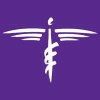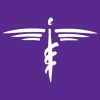Pickleball is a fast-growing sport in the United States, especially among middle-aged and older adults. As its popularity has increased, so have injuries, presenting risks that players should understand.
Invented in 1965 as a substitute for badminton, pickleball’s popularity has surged in the past decade. From 2013 to 2019, membership in the United States of America Pickleball Association increased a whopping 650%. The low-impact, easy-to-learn activity offers significant health benefits. With its advantages, however, comes some disadvantages — especially for the lower extremities.
According to the National Electronic Injury Surveillance System, the annual estimated number of pickleball-related injuries between 2001 and 2012 ranged between 0 and 462. Over the next few years, injuries began escalating among players:
- 2013: 688 injuries
- 2014: 1,391 injuries
- 2015: 4,359 injuries
- 2016: 4,712 injuries
- 2017: 6,072 injuries
The highest proportion of patients were 60–69 years of age, followed by 70–79 years of age, and then 50-59 years of age. These three generations accounted for more than 83% of pickleball injuries and affected males and females equally.
Pickleball players can experience a range of injuries, from minor strains and sprains to more severe injuries like head trauma. The lower body, especially the ankles and knees, is the most commonly injured area. This is due to the twisting side-to-side movements required in pickleball, which can lead to ankle sprains.
The Achilles Heel and Pickleball
Constant lunging for the ball also puts stress on the Achilles tendon. Foot and ankle specialists are seeing more Achilles tendon injuries as pickleball grows in popularity.
A variety of injuries can happen to the Achilles tendon due to pickleball:
Achilles Tendinitis
This is an inflammation of the gliding structure of the tendon. The Achilles tendon remains intact when injured, but inflammatory fluid surrounds it. It presents as pain and swelling above the back of the heel bone. Activity and sliding your fingers up and down the tendon can elicit pain.
Tendinitis occurs from overuse, strain, repetitive motions or starting an activity too aggressively. The body is simply not used to the activity, which can result in pain and swelling. To avoid this, a gradual increase in activity is recommended.
Treatment often consists of stopping the activity and immobilizing the tendon. Immobilization with weight-bearing can be done with a removable boot that limits the tendon’s movement, allowing the inflammation to subside. Oral over-the-counter or prescription anti-inflammatories can reduce the inflammation more quickly. Physical therapy can help with the inflammation and allow players to return to the activity while minimizing the risk of recurrence. Proper stretching exercises both before and after playing are important.
Achilles Tendinosis
This is a degeneration of the tendon. While tendinitis occurs quickly, tendinosis is a gradual onset. Performing the same activity with the same body mechanics results in degeneration. This degeneration will present as a “nodule” and possible small tears within the Achilles tendon above the back of the heel. This nodular thickness is painful with activity and is more painful with pinching the nodule side to side. Inflammation may or may not occur with this condition.
Clinical diagnosis can be aided with ultrasound evaluation or an MRI to evaluate the extent of the degeneration. One of the underlying factors that can lead to this condition is the tightness of one of the tendon structures in the back of the leg. This tightness causes an excessive pull of the Achilles tendon, which can accelerate the degeneration.
Treatment consists of rest and immobilization, similar to tendinitis. Physical therapy is vital with tendinosis. Specific “eccentric” stretching can promote the healing of a portion of the degeneration. In some cases, surgery is an option when all conservative treatment fails. This surgery involves lengthening the tight tendon in the back of the leg if needed and then removing the degenerated portion of the tendon. While surgery can be successful, it should be considered only if conservative treatment fails and the patient is not able to resume normal expected activities.
Rupture of the Achilles Tendon
This is the worst-case scenario injury. A rupture occurs when a movement causes a quick change of positioning of the foot from a “toes down” (plantar-flexed) position to an immediate “toes-up” (dorsiflexed) position. This can be a common motion in pickleball.
The tendon will lose its vascular supply as we age, predisposing it to injury. The player will feel a “pop” in the back of the leg or may even hear it. Pain occurs initially but surprisingly decreases to a dull ache within a couple of minutes after the injury. The player might even be able to “hobble” on the injured tendon. The diagnosis can usually be confirmed clinically with a simple test that can be performed in the office. Rarely is ultrasound or an MRI required in the acute setting. An ultrasound or MRI might be needed if a player presents weeks after the injury.
In cases of a rupture, players should discuss the pros and cons of conservative or surgical treatment with a podiatric physician. A player’s medical history is important as this could be the determining factor of surgery. There are some medical conditions in which surgery would likely be avoided; an example of this would be an individual with poorly controlled diabetes. Conservative treatment usually involves a period of non-weight bearing followed by a walking boot for several weeks. The most significant risk of conservative treatment is an increased risk of re-rupture.
For players who would like a chance to return to pickleball, surgery is often recommended. This involves an outpatient procedure that brings the tendon ends back together, allowing them to mend. Following this surgery, patients need a period of non-weight bearing until the incision heels and then protected weight-bearing in a fracture boot until about eight weeks after the surgery.
Regardless of the treatment, physical therapy with functional rehabilitation yields the best results, but it takes time to get back to activities. Six to 12 months may be needed to try to return to the pickleball court. The tendon and the muscles need to heal and recover, and the player has to learn to trust the leg again. Trusting the leg may take the longest time and might be the limiting factor for the return.
How to Stay on the Court
The best way to deal with injuries is to prevent them:
- Take the time to warm up and stretch before every match.
- After you play, stretch or use a foam roller over trouble spots.
- If you have persistent pain in the Achilles or feel a “pop” in the tendon, see a foot and ankle specialist immediately.
- Stay active, but also stay smart and listen to your body.
Foot and ankle experts with Des Moines University Clinic offer appointments at two locations:
- DMU Clinic – Foot and Ankle, 3200 Grand Ave., Des Moines
- MidAmerican Energy RecPlex, 6500 Grand Ave., West Des Moines
Call 515-271-1731 for appointments.


